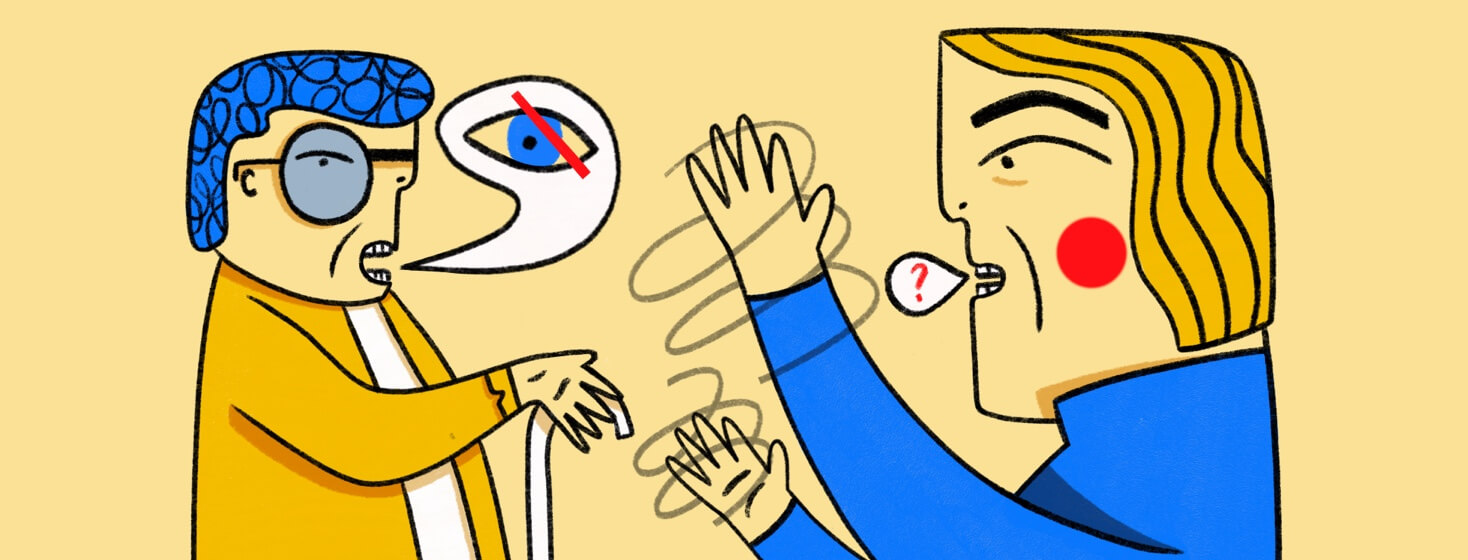Communication Disability
I get free, audiobooks from the National Library Service. Why? Because I have a communication disability. I never think of me having a communication disability. I have a great vocabulary and I am a pretty good listener. How can I have a communication disability?
Non-verbal communication
The problem is verbal communication is only a small piece of the puzzle. And it is a surprisingly small piece! A conservative estimate is that 70% of all communication is non-verbal.
It comes through our perception of body movement and posture, facial expression and eye contact, hand gestures, and tone of voice. Of those, only one source of communication is not gathered through vision. It is no wonder my clients are constantly telling me about some kerfuffle they experienced when trying to have an important exchange through texting. This probably explains the popularity of emoticons and Bitmoji.
Awkward interactions
It ALSO explains why I more than occasionally put my proverbial foot in it! With my communication disorder – macular degeneration (AMD) – I am missing a great deal of meaning.
I imagine many of you are having the same issues. Lynsey Romo of North Carolina University, who is visually impaired, conducted interviews with other visually impaired folks.1
She found there is plenty of awkwardness in the social interactions of VIPs (visually impaired persons). This led to shame and isolation. How would Romo suggest we get around all of this and try to get back into our communities?1
Why I disclose my status
First of all, I like to say great minds think alike! Romo and I agree you should disclose your visual status. I generally disclose at the start of an interaction. Almost like “My name is Bill and I am an alcoholic.” Get it right out there and shame the devil as the saying goes.
I did nothing to be experiencing this mess of legal blindness and I expect you did nothing either. This is not of our doing and there is no reason for shame. No harm, no foul.
Besides, I also would rather be known to be visually impaired than socially clueless, but Romo does not mention that one. She did suggest using what she calls nonverbal cues and what I would rebrand as props.1
White canes
When I was being given orientation and mobility lessons – another story. I was trying to cross a four-lane highway with my bike and my instructor showed up with a bucket of canes!
I was taught one of the biggest values of a white cane is its use as a communication tool. In other words, nothing says visually impaired like a white cane! If you have it, flaunt it. It communicates your status quite well.
To disclose or not to disclose?
When I first started to lose my sight, I really wrestled with the problem of revealing my status to others. I thought of t-shirts and buttons but finally ended up on just telling people. Of course, I do have a work-out shirt that declares me a “blind chick with attitude!” There are all sorts of products online if you are interested in going that route.
Romo has all sorts of other suggestions that I am pretty sure most of you use: politeness, humor, advocacy for yourself, education. Since I am a student and a teacher by nature, I usually introduce my explanations about AMD by telling people this is the educational part of our program and to stop me when they are too bored!1
We're in this together
Romo ends her journal article by commenting upon how many VIPs don’t realize how universal their experiences with social communication problems are. I would end mine by reiterating this point: visual impairment is not your fault and nothing to be ashamed of. Let people know.1

Join the conversation